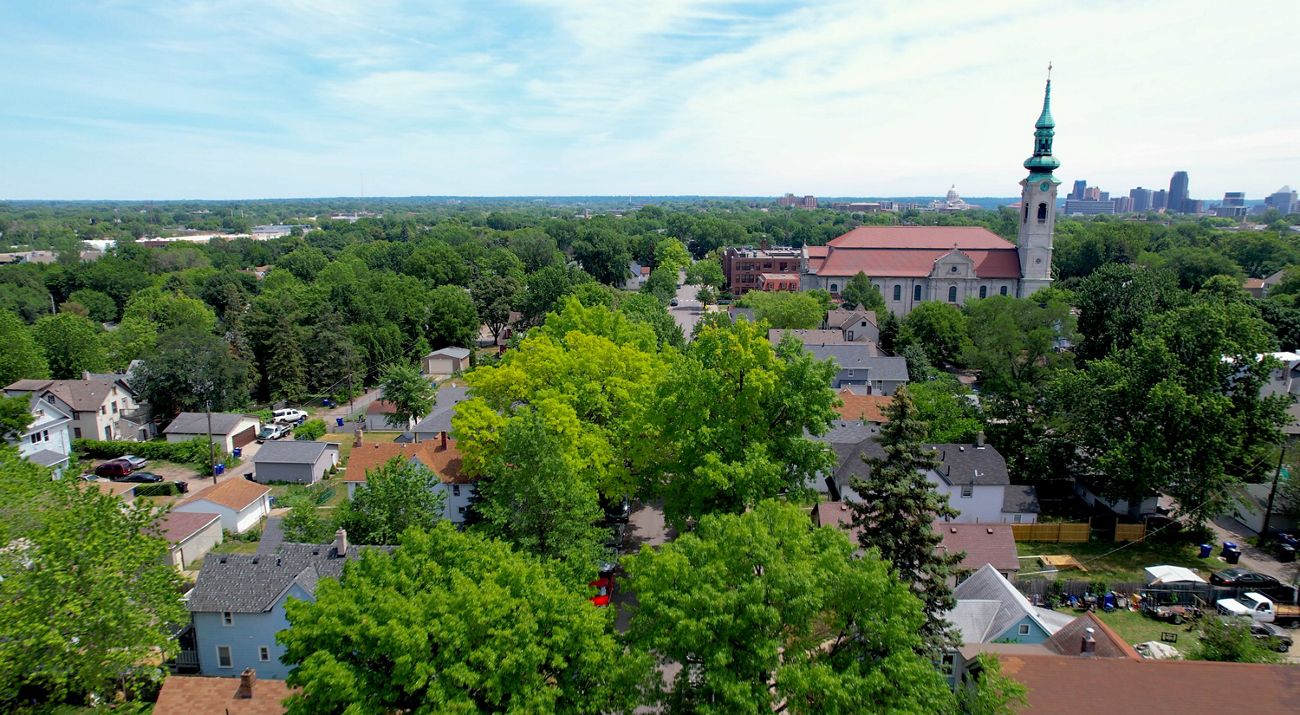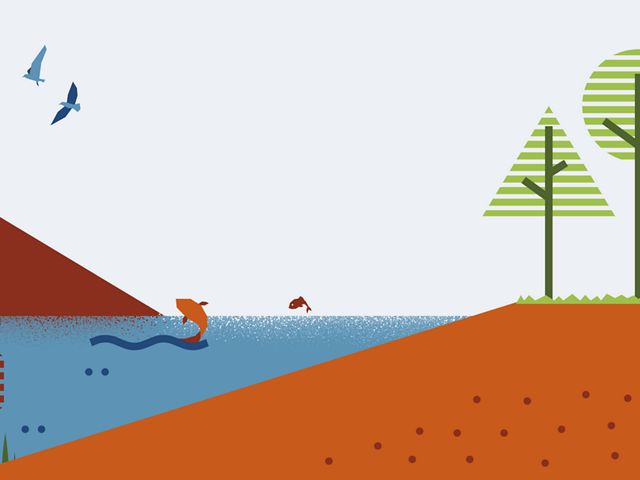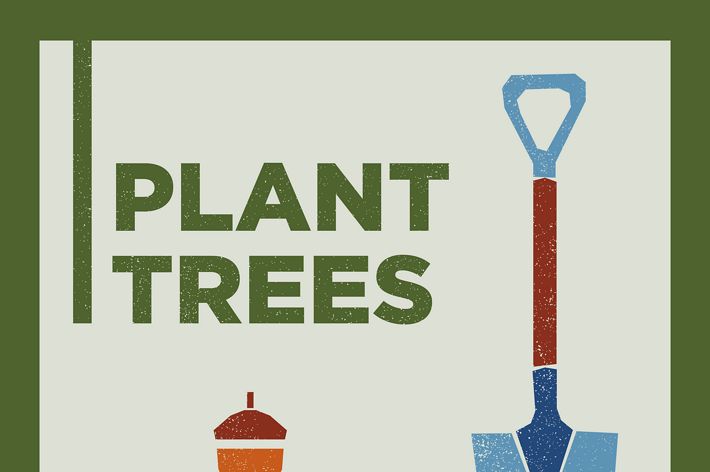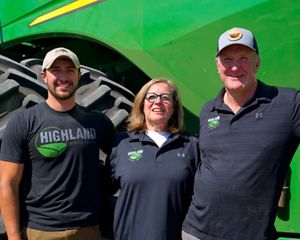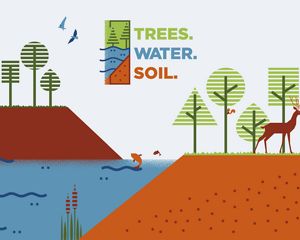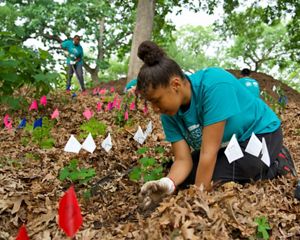Neighborhood Climate Action: Frogtown Green
In one of St. Paul's historically redlined neighborhoods, residents are planting trees for the benefit of people, nature and climate.
Climate change affects everyone, but some neighborhoods—particularly in areas where residents have lower incomes—feel the heat more keenly. Put simply, poorer neighborhoods are measurably hotter, because they have fewer shade trees.

In the Frogtown neighborhood in Saint Paul, which has significantly less green space and fewer trees than any other neighborhood in the city besides downtown, community advocate Patricia Ohmans is working with other community leaders to turn things around. The goal of Frogtown Green, the grassroots group she helped create, is to make her neighborhood the greenest one in the city—and not just by planting trees.
Frogtown sits north of Interstate 94, just above bustling University Avenue with its Green Line light rail and dazzling array of restaurants. It’s historically an immigrant community, set not too far from the State Capitol building and the historic Rondo neighborhood. Over the past 40 years, Frogtown has changed a lot. Its population was once approximately 80% white, but today, the neighborhood is significantly more diverse, with more than two-thirds of its residents identifying as Asian, Black, Latinx or Native American. The neighborhood is above the 80th percentile nationally for some critical pollutants and toxins, according to the EPA.
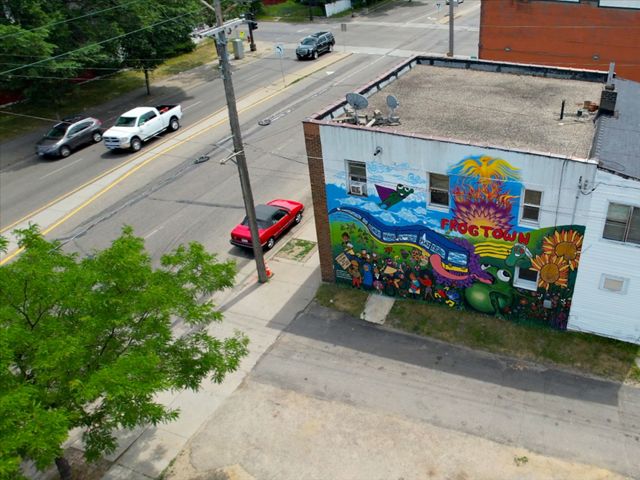
Frogtown Green began in 2009 as an outgrowth of a neighborhood campaign for a new city park in Frogtown. Ohmans—along with her husband Tony Schmitz and longtime neighbors Seitu Jones and Soyini Guyton—championed the creation of Frogtown Park and Farm, a 13-acre park with an embedded 5-acre organic farm. They argued that a new park would provide vital greenspace—known to help improve physical and mental health—in a part of the city where greenspace is hard to come by. In 2009, nearby Battle Creek neighborhood in Saint Paul had 300 times more green space per child than Frogtown. With the help of many supporters and the Trust for Public Land, Frogtown Park & Farm became a new city park in 2012.
After the success of that campaign, Frogtown Green spun off to concentrate on larger environmental issues in the neighborhood. Today, Frogtown Green seasonal staff and volunteers plant trees, run summer science and nature education workshops, support pollinator-friendly habitat and manage community gardens that offer residents a chance to grow their own food and learn about sustainability principles.
Quote: Renoir Gaither
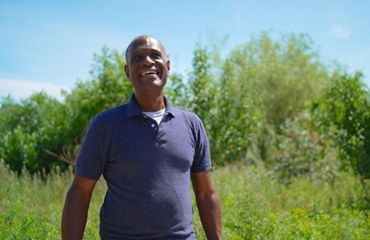
Tree canopy matters a lot...to mitigate climate change and global warming.
Frogtown’s name refers to the time when it was open land and marshy habitat with lots of frogs. In seasonal workshops for kids at neighborhood schools and rec centers, Frogtown Green’s FrogLab staff remind participants of that history. Workshop leaders pose questions like: Why were there frogs? And why did they go away? Kids learn that the marshes were turned into dumps as Saint Paul grew through the 1900s. When the dumps were paved over, the frogs disappeared completely. Exploring Frogtown’s quirky name leads to realizations about the neighborhood’s environmental history.

Back when Ohmans and her neighbors were advocating for that new park, they learned that Frogtown had only 21% tree canopy. This falls short of the 35% canopy that is considered ideal for urban areas; some neighborhoods in Saint Paul have even more than 35%. With the help of the Saint Paul Forestry Department, they developed a plan to address this shortfall.
Trees are relatively inexpensive but providing the right conditions for them to thrive takes some effort. After learning about a technique called gravel bed planting, Frogtown Green volunteers built several gravel bed tree nurseries to nurture young saplings until they reached a more resilient age.


“We give trees away,” Ohmans says. The program, called Free Trees for Frogtown, gives away an average of 50 new trees a year and up to 75 trees some years. Since its inception, about 500 trees have been planted in Frogtown yards; 450 have survived and are still growing. Last year, a full-time AmeriCorps member was assigned to Frogtown Green to help with tree planting.
The Free Trees for Frogtown program focuses on climate-resilient varieties: apple, maple, linden, hackberry, planetree, lilac, ironwood, and Kentucky coffee tree. It also offers pear, cherry, and a hardy northern variety of peach. Due to climate change, Minnesota’s growing zone has shifted from mostly zones 3 and 4 in 1980 to mostly zones 4 and 5 today (a longer growing season and hotter days), with a zone 3 area in the far northern part of the state. The change in climate growing zone has made Frogtown more hospitable for some fruit trees.
Quote: Patricia Ohmans
When you start at the neighborhood level, you can do a little something about global climate change. And every little something adds up.
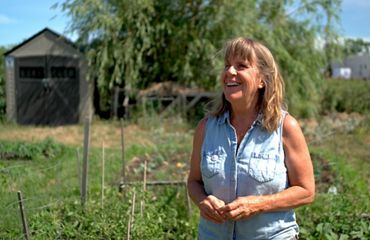
Frogtown Green’s work is especially important because climate change disproportionately affects poor neighborhoods. Frogtown’s median income for a family of four is less than $35,000 a year. Asthma rates are higher among kids in Frogtown; COPD and other respiratory illnesses are higher among adults there. Planting trees and adding green space can reduce rates of respiratory illness by reducing air pollution.
With regard to the importance of climate change in her neighborhood, Ohmans says, “It took us a long time to figure out and for the realities of climate change to kick in. It was a low priority for people. It’s invisible and abstract. It’s so huge you can’t see it; its effects are slow and incremental. Why not work on poverty instead?”
But the organization realized that climate change, poverty, and other issues were all linked and that work on one issue could help improve metrics on others. “Our neighborhood is affected by what’s happening globally. The effects of climate change will hit Frogtown harder than other neighborhoods. We gradually started to see everything is connected.”
One branch of their response is Lily Pad Community Garden, a 25,000-square foot lot with seven learning stations that promote local food growing, gardening for pollinators, composting systems, bicycle commuting, harvesting rainwater, and other steps that individuals and households can take to address climate change.
Lifestyle changes that improve sustainability are good in other ways, too. “You can save money by growing your own food,” Ohmans notes, “and harvesting rainwater for use in the garden can reduce the pressure on municipal water. Why pay to use treated, chlorinated drinking on your flowers?” Frogtown Green is intentional about showing how taking individual steps like these help residents save money and resources.
Want More Stories?
Get new stories and timely action alerts so you can speak for our trees, water and soil.
Sign upFrogtown Green’s impact is quantifiable in terms of acres of parkland added, trees planted, pounds of food harvested, and more. It’s clear that the organization is improving the lives of Frogtown residents—and possibly beyond. “I like to believe that Frogtowners are happier and healthier because of what we do,” Ohmans says. “When you start at the neighborhood level, you can do a little something about global climate change. And every little something adds up.”
